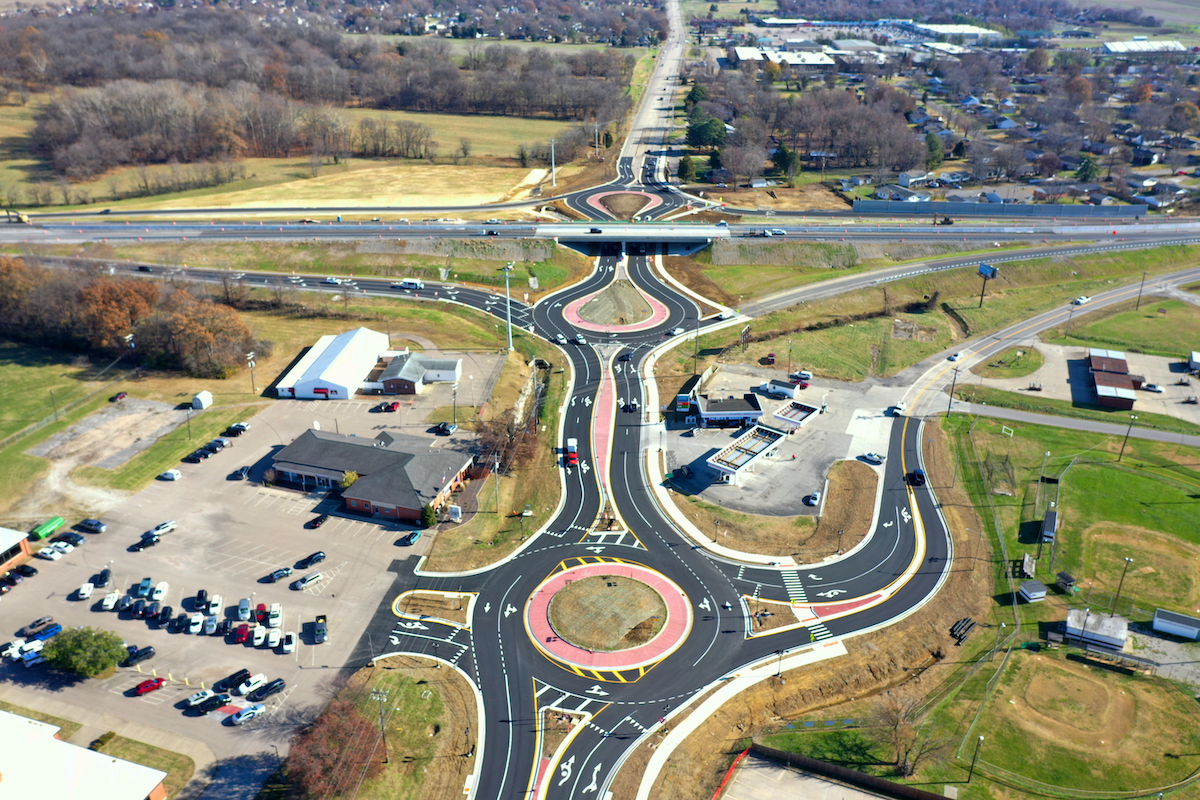How do you safely build two 633-foot-tall, steel towers and a massive hydraulic pit on an aggressive schedule with strict deadlines? At Florida’s new Launch Complex 36, S&R Enterprises LLC used modules to speed construction and allow mechanical installation while close to the ground, with a unique crane configuration for the heaviest lifts.
Their efforts resulted in a 2024 Project of the Year award from the Steel Erectors Association of America (SEAA) in Structural Class IV for projects over $2.5 million.
Located at Cape Canaveral Space Force Base, Launch Complex 36 is home to Blue Origin’s reusable New Glenn rocket. Standing more than 320 feet tall, the rocket is named after John Glenn, the first American to orbit earth. Blue Origin’s website says the advanced heavy-lift vehicle will support customer missions and Blue Origin programs, including a return to the moon as part of NASA’s Artemis program.
Launch Complex 36 is the first ground-up construction at Kennedy Space Center in more than 50 years. S&R Enterprises, based in Harrisburg, Pennsylvania, handled erection of 9,450 tons of steel, with Cives Steel, headquartered in Alpharetta, Georgia, as their steel fabricator.
A total of 14 modules were constructed and stacked on top of each other to form the two steel towers.

| Your local Wirtgen America dealer |
|---|
| Brandeis Machinery |
“We had worked for over a year with the contractor during the budget phases of the project — before being awarded the job — to identify the best way to erect the towers,” said Stephen Burkholder, President/COO of S&R Enterprises.
With modular construction, “It enabled the MEP [mechanical, electrical, and plumbing] trades to start installing at an earlier date,” said Patrick Macisso, Engineering Manager for S&R Enterprises. “They didn’t need to wait for us to be topped out and then build scaffolding from the ground up. It alleviated a lot of the long lead times waiting for them to get in there.”
Crews built the modules on site next to the towers and hydraulic pit before cranes lifted them into place.
The square Vehicle Access Tower (VAT), outfitted with stairs and an elevator shaft to provide crews access to the rocket, included seven core blocks. The triangular Lightning Protection Tower (LPT) with ladder access to the top will help protect the rocket from lightning strikes. The LPT consisted of five core blocks.

| Your local LeeBoy dealer |
|---|
| Brandeis Machinery |
After crews stacked those modules one at a time, both towers were topped off with a 100-foot-tall, fiberglass candlestick. One module was lifted more than 600 feet high.
“The modular construction of this project required precise layout and multiple checks at every connection prior to stacking to ensure proper fit,” Macisso said.
Between the two towers, S&R Enterprises built the steel launch platform that will divert rocket exhaust and house critical MEP launch components. The platform will lift and support the rocket during launch, from horizontal assembly position to the vertical launch position.
Although the towers were specified as modular construction in the bid documents, modularization of the launch platform came after bidding.

| Your local Bobcat dealer |
|---|
| O'Leary's Contractors Equipment & Supply |
“It was all to be stick-built, but as the design intensified it was clear the precursor work would have prevented the piping contractors from getting the time they needed to install piping before the post installation occurred,” Burkholder explained. “We suggested modularization as an option because we already had the larger crawler crane on site.”
S&R Enterprises stick-built the base, starting 50 feet below ground. The upper section with 36 columns was built in a module then lifted and placed in its final position.
“That not only enabled the mechanical contractors to get in sooner, but they could work from scissor lifts to install the miles of piping safely from an easy access position,” Macisso said.
The upper module required a complex rigging design, provided by Reeb Rigging of Baton Rouge, Louisiana. To ensure correct weight and center of gravity for the lift, each leg of the rigging was fitted with a loadcell featuring a radio link that gave engineers real-time load dynamics of the lift procedure.

| Your local Gomaco dealer |
|---|
| Fabick CAT/MO |
At a weight of 1 million pounds, the upper module had to be crawled over 100 feet with a Liebherr LR 11350 Crane to place it on top of 36 fixed column ends that were precisely aligned prior to making the connections.
“It was a well-choreographed event,” Macisso said. “We had our Lift Engineer Jacob Cole and Erection Engineer Adam Friedman watching the lift from an elevated point with the 24 loadcells attached to the rigging so they could monitor the load and advise of any adjustments needed. I was set up with a total station, monitoring the columns the module would sit down on. Chris Welch was our Erection Foreman and led the crew of riggers that ensured a smooth lift off the ground jig. A crew of connections helped guide the module down and connected it to the structure. It was a large production that took all day, but everyone knew their part and we got it done in a 10-hour shift.”
S&R also installed the catenary wire that surrounds the launch pad to protect the rocket from lightning. They used cranes and winches and tensioned it with loadcells to ensure quality.
Throughout the project, S&R Enterprises utilized four large Liebherr crawler cranes — two LR 11350 cranes and two LR 1300 SX cranes with tip heights over 650 feet tall.

| Your local Komatsu America Corp dealer |
|---|
| Brandeis Machinery |
To lift the heaviest steel modules into position, they added Liebherr’s PowerBoom (P-boom) configuration on one of the LR 11350 cranes. According to Liebherr, the PowerBoom system increases load capacity of large crawler cranes by up to 50 percent and provides more stability in the direction of the load and to the side.
“It’s a double boom configuration,” Macisso explained. “You have a wishbone boom that comes up, splits into two, then comes back together. We had the luffing jib above that. That configuration gave more capacity for the higher, weighted loads.”
The scale and complexity of the project required constant coordination of multiple crews, cranes, and tasks to keep the work moving safely and efficiently.
With the first launch of the New Glenn rocket scheduled for later this year, “Blue Origin had critical dates we needed to make,” Macisso said. “We worked days and nights, along with many weekends, to reach our goal and keep the customer happy and on schedule.”

| Your local Wirtgen America dealer |
|---|
| Brandeis Machinery |
Burkholder credited the teamwork among all the stakeholders. “The project was a huge success because all team members — the owner, general contractor, fabricator, and S&R — worked together as a team,” he said. “Money was tabled, then discussed after the best plans were identified, and the risk was shared by all.”
With their steel erection contract valued at $46.2 million, S&R Enterprises started work in September 2019 and topped out in November 2023. Since then, they have helped with other work at the site, including the transporter erector that moves the rocket while it is still horizontal on the ground.
“This is the fourth time S&R Enterprises has won a Project of the Year award,” said Pete Gum, SEAA Executive Director. “The company is known for taking on the complex, big jobs and delivering as promised.”
S&R Enterprises last won SEAA’s Project of the Year award in 2016 for their work on the refurbishment of NASA’s Vehicle Assembly Building High Bay No. 3 at Kennedy Space Center.

| Your local Wirtgen America dealer |
|---|
| Brandeis Machinery |
“SEAA has been recognizing steel erectors for their work for more than 20 years,” Gum added. “Winners are selected by an independent panel of engineers based on how they safely and productively overcame the challenges of the job. The challenges are often common ones all erectors face — space and time constraints, changing schedules, complex rigging and lifting, weather delays. The award winners demonstrate how creative construction processes, pre-planning, and communication make the difference for completing a job without injury and on time.”














































































